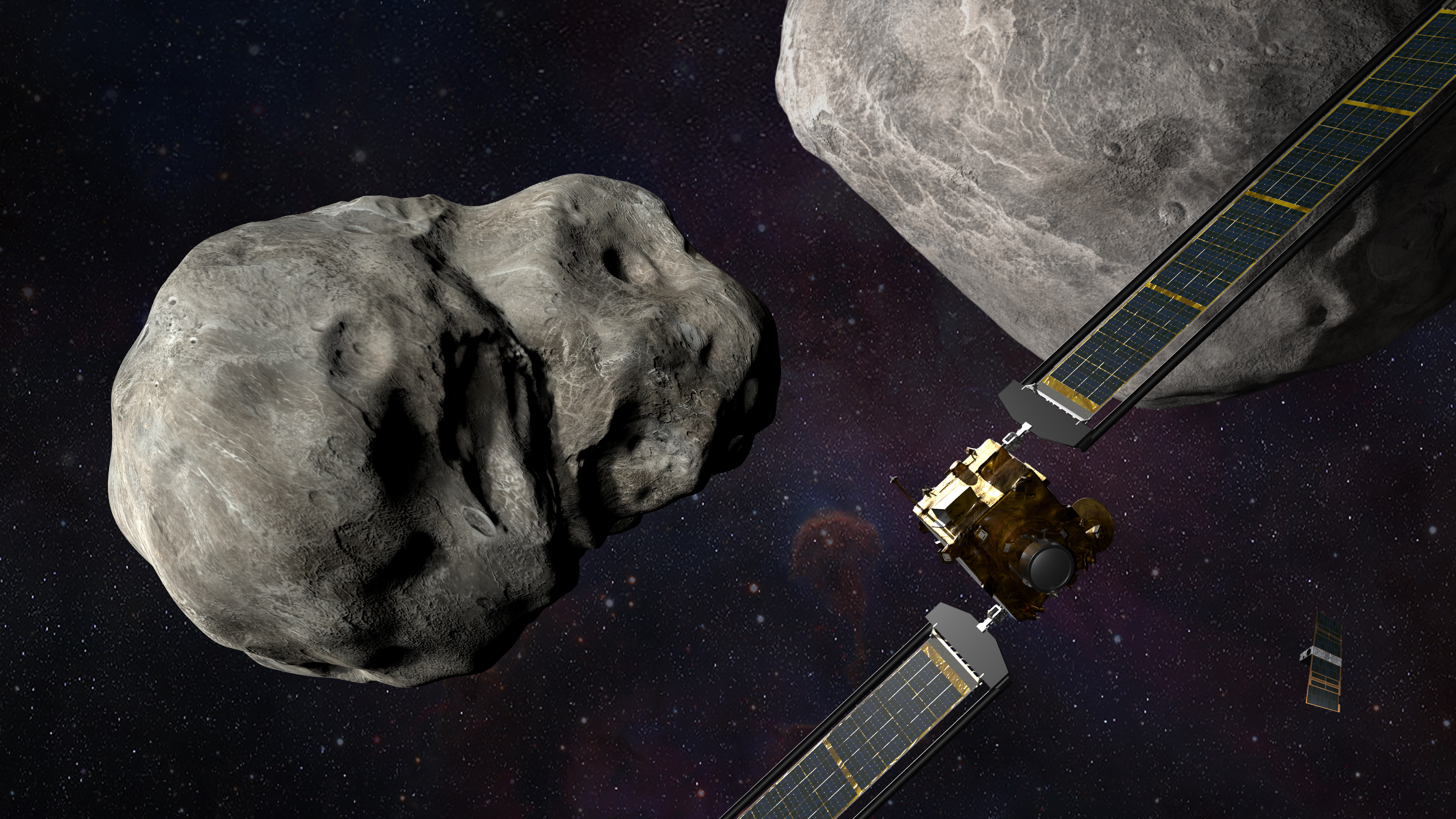NASA delays launch of DART asteroid defense mission
The Double Asteroid Redirection Test is now scheduled to launch in 2022.

NASA has delayed the launch of its first-ever planetary defense mission aimed at deflecting potentially hazardous asteroids from colliding with Earth.
The mission, called Double Asteroid Redirection Test (DART), will send a spacecraft to test crash into the near-Earth binary asteroid system called Didymos, in 2022. NASA announced Feb. 17 that this year's primary launch window of July 21 to Aug. 24 is no longer an option. Instead, the space agency is targeting a backup window that opens Nov. 24 and runs to Feb. 15, 2022, according to a statement from NASA.
The decision to postpone the launch was made by NASA Science Mission Directorate (SMD) senior leadership following a risk assessment of the DART project schedule. Delaying the launch of the mission will not affect the spacecraft's arrival at its target, which is slated for October 2022, NASA officials said.
Related: Potentially dangerous asteroids (images)
The recent risk assessment revealed technical issues with two major components of the spacecraft, including its main instrument, the Didymos Reconnaissance and Asteroid Camera for Optical-navigation (DRACO), and its Roll-Out Solar Arrays (ROSA). The DRACO imager needs to be reinforced to ensure it can withstand launch, while the solar arrays are delayed following supply chain issues caused in part by the COVID-19 pandemic.
"At NASA, mission success and safety are of the utmost importance, and after a careful risk assessment, it became clear DART could not feasibly and safely launch within the primary launch window," Thomas Zurbuchen, SMD associate administrator, said in the statement. "To ensure DART is poised for mission success, NASA directed the team pursue the earliest possible launch opportunity during the secondary launch window to allow more time for DRACO testing and delivery of ROSA, and provide a safe working environment through the COVID-19 pandemic."
Get the Space.com Newsletter
Breaking space news, the latest updates on rocket launches, skywatching events and more!
The DART spacecraft will launch on a SpaceX Falcon 9 rocket from Vandenberg Air Force Base in California. NASA is working with SpaceX and the agency's Launch Services Program to identify the earliest possible launch opportunity within this secondary window.
DART will target a binary asteroid system that consists of a larger asteroid called Didymos, which measures about 2,540 feet (775 meters) wide, and a smaller asteroid satellite called Dimorphos, which measures 540 feet (165 m) across. The mission will test a new planetary defense technique, requiring the spacecraft to slam into Dimorphos to change the orbital speed of the asteroid through a kinetic impact. If successful, this technique could be used to deflect asteroids that pose a threat to Earth.
"While COVID-19 was not the sole factor for this delay, it has been a significant and critically contributing factor for multiple issues," NASA officials said in the statement. "Testing equipment before launch is a crucial step in all missions to ensure mission success, and project teams build time into processing schedules to accommodate for potential delays."
NASA's DART mission will also carry a small satellite called Light Italian Cubesat for Imaging of Asteroid, or LICIACube, which was built by the Italian Space Agency to observe the impact at Dimorphos and return images of the event to Earth. The European Space Agency is also planning a follow-up mission to Dimorphos, known as Hera, which will assess the results of the DART mission and study the impact site on the asteroid. The Hera mission is expected to launch in 2023 or 2024 and will arrive at the asteroid two years later.
Follow Samantha Mathewson @Sam_Ashley13. Follow us on Twitter @Spacedotcom and on Facebook.
Join our Space Forums to keep talking space on the latest missions, night sky and more! And if you have a news tip, correction or comment, let us know at: community@space.com.

Samantha Mathewson joined Space.com as an intern in the summer of 2016. She received a B.A. in Journalism and Environmental Science at the University of New Haven, in Connecticut. Previously, her work has been published in Nature World News. When not writing or reading about science, Samantha enjoys traveling to new places and taking photos! You can follow her on Twitter @Sam_Ashley13.









